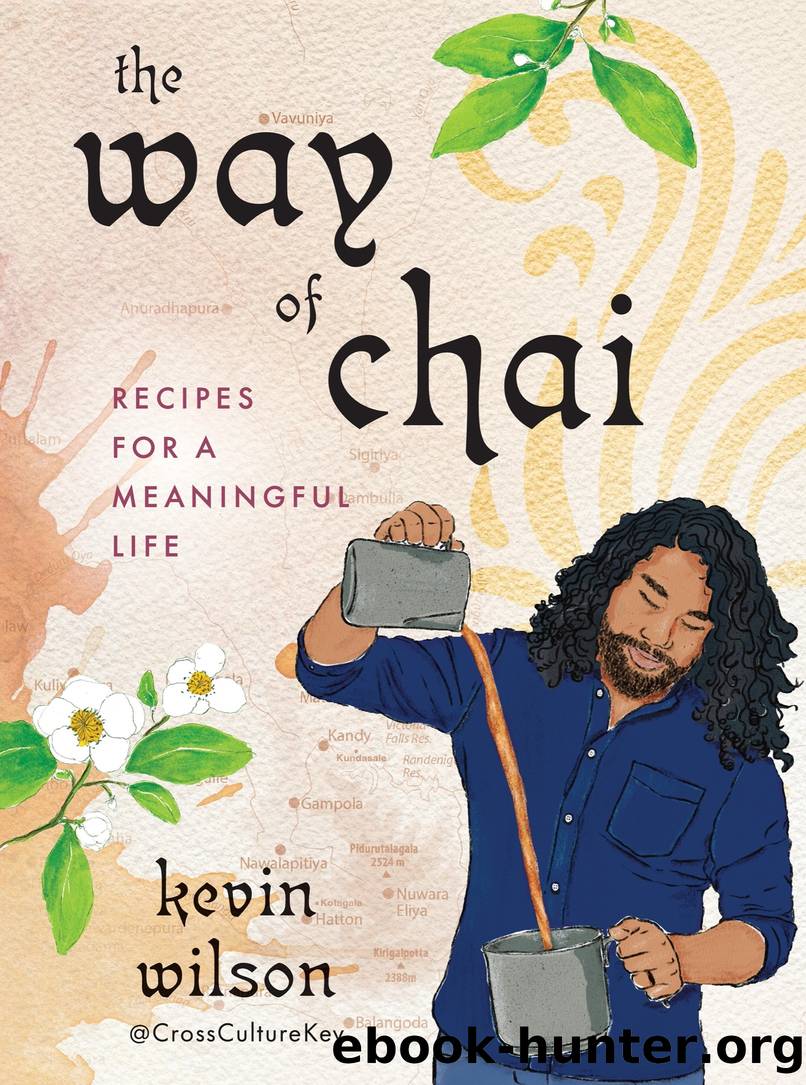The Way of Chai by Kevin Wilson

Author:Kevin Wilson [Wilson, Kevin]
Language: eng
Format: epub
Publisher: Penguin Publishing Group
Published: 2023-11-14T00:00:00+00:00
* * *
Paying attention to the heat is probably one of the most crucial steps in the chai-making process. You can have the best ingredients, the best equipment, and the ideal recipe, but ultimately the quality of your chai will depend on your heat management.
Here are a few points in your chai-making process when you should pay more attention to your heat: If you plan on toasting the spices prior to crushing them, you only need ten to fifteen seconds in a pan over medium heat to get a bold, smoky chai flavor. Itâs important to toast whole spices rather than pre-crushed or powdered spices because the higher surface area of powdered spices can cause them to burn faster and will make your chai unpalatable.
If your chai requires a 1:1 ratio of water to milk, add the crushed spices along with your tea to simmering water (185°F to 205°F/85°C to 95°C), and when the water comes to a vigorous boil, immediately add cold milk to arrest the heating process. Overboiling the water can remove oxygen and hydrogen molecules from the water when it converts into steam, which makes the tea taste flat. I also add the spices to simmering water because boiling the spices in water for more than a minute can overextract the oils from bold spices like cardamom and cloves, making the chai chalky and bitter. The same can happen to the teaâblack teas like Ceylon BOPF and Kenyan BOP release tannins that produce the astringency required to balance out the thickness of the milk, but when oversteeped, these teas can release more tannins, resulting in a bitter tea.
For chais with a milk-only base, like doodh patti, I add the tea and spices to the heating milk roughly thirty seconds after Iâve turned on the heat. I keep the heat constant on a medium-high setting throughout the process, stirring the chai for a few minutes only at the beginning. Constant stirring of the chai also affects the process because the agitation increases the time it takes for the tea to rise to the top of the pot, which is when I know the chai is ready.[*] Itâs also important to note that different types of milk have different boiling points. While itâs not entirely necessary to memorize them, it is helpful to note the variety lest you overheat some and underheat others.
The more present you become to the process, paying close attention to visual cues and smells, the better your chai is going to be.
The quality of your chai depends on the quality of your attention.
Download
This site does not store any files on its server. We only index and link to content provided by other sites. Please contact the content providers to delete copyright contents if any and email us, we'll remove relevant links or contents immediately.
| Beer | Cocktails & Mixed Drinks |
| Coffee & Tea | Homebrewing, Distilling & Wine Making |
| Juices & Smoothies | Wine & Spirits |
101 Whiskies to Try Before You Die by Ian Buxton(44787)
World's Best Whiskies by Dominic Roskrow(44730)
Whiskies Galore by Ian Buxton(41864)
Craft Beer for the Homebrewer by Michael Agnew(18140)
Right Here, Right Now by Georgia Beers(4122)
Not a Diet Book by James Smith(3335)
Water by Ian Miller(3126)
The Coffee Dictionary by Maxwell Colonna-Dashwood(3062)
Kitchen confidential by Anthony Bourdain(3006)
Coffee for One by KJ Fallon(2559)
Smuggler's Cove: Exotic Cocktails, Rum, and the Cult of Tiki by Martin Cate & Rebecca Cate(2468)
Superfood Smoothie Bowls: Delicious, Satisfying, Protein-Packed Blends that Boost Energy and Burn Fat by Chace Daniella(2387)
Talking as Fast as I Can by Lauren Graham(2378)
Beer is proof God loves us by Charles W. Bamforth(2368)
Bourbon: A Savor the South Cookbook by Kathleen Purvis(2244)
A Short History of Drunkenness by Forsyth Mark(2232)
Eat With Intention by Cassandra Bodzak(2153)
Cocktails for the Holidays by Editors of Imbibe magazine(2077)
Colombia Travel Guide by Lonely Planet(2060)
